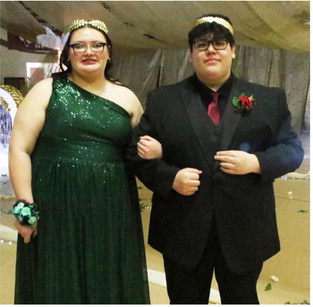If Only We Could Eliminate Cervical Cancer
Australia is poised to be the first country to approach cervical cancer elimination. Through nationally-funded HPV vaccination programs, vaccination programs targeting males, and comprehensive organized cervical cancer screening programs, their National Strategy for the Elimination of Cervical Cancer aims to eradicate this cancer as a public health issue in Australia by 2035.
In Roosevelt County, Montana, we have the same two tools as the Australians at our disposal to lower rates of cervical cancer — the Human Papilloma Virus vaccine and cervical cancer screening. This article seeks to look at one common barrier to HPV vaccination.
HPV vaccine can prevent infection with some types of human papillomavirus. The vaccine is one of the most studied vaccines in the world and has proven to be safe.
HPV infections can cause certain types of cancers, including: • Cervical, vaginal, and vulvar cancers in women
• Penile cancer in men
• Anal cancers in both men and women
• Cancers of tonsils, base of tongue, and back of throat (oropharyngeal cancer) in both men and women HPV infections can also cause anogenital warts.
HPV vaccine can prevent over 90 percent of cancers caused by HPV.
HPV is spread through intimate skin-to-skin or sexual contact. HPV infections are so common that nearly all people will get at least one type of HPV at some time in their lives. Most HPV infections go away on their own within two years. But sometimes, HPV infections will last longer and can cause cancers later in life. Over 30,000 Americans get cancer from HPV every year. Most could be prevented with the HPV vaccine.
Cancer is awful, and the public cries for something to prevent it. With the HPV vaccine, that’s what we have. Cancer prevention.
A barrier arises, though, when the HPV vaccine is declined by parents because it is associated with sex instead of with cancer prevention. Many parents are hesitant to have their children get the vaccine at the recommended age because they associate it with being some kind of encouragement, by the vaccine provider, for their 11- to 12-year-old child to have sex.
There are three reasons given by Merck, the manufacturer of HPV vaccine, to start the series at 11-12 years of age:
•1) the body produces a greater antibody level response to the vaccine at age 11-12,
•2) data on HPV epidemiology supports the 11-12 year age, and
•3) the vaccine is most effective before exposure to HPV and data on sexual debut in the U.S. supports the 11-12 year age.
The HPV vaccine really isn’t about sex. It’s about preventing cancer. According to Patty Presser, director at Roosevelt County Health Department, “It is perplexing to see women totally on board with getting pap smears to screen for cervical cancer for themselves but declining the HPV vaccine to PREVENT cancers in their daughters and sons. There is a disconnect that’s hard to understand.”
The truth is that vaccination prevents HPV infection, benefiting both the vaccinated person and their future sex partners by preventing spread of HPV.
HPV vaccine is available in Roosevelt County at: Roosevelt County Health Department, 124 Custer St., Wolf Point; 406-653-6223.
Chief Redstone IHS Clinic, 550 Sixth Ave. N. Wolf Point; 406-653-1641.
Riverside Family Clinic, 209½ A Street, Poplar; 406768-5171.
Verne E. Gibbs Health Center (IHS Clinic), 107 H Street East, Poplar; 406-768-3491.
Roosevelt Medical Center Clinic, 838 2nd Ave. East, Culbertson; 406-787-6400.
For more information, contact Roosevelt County Health Department at 406-653-6223 or cdc.gov.

